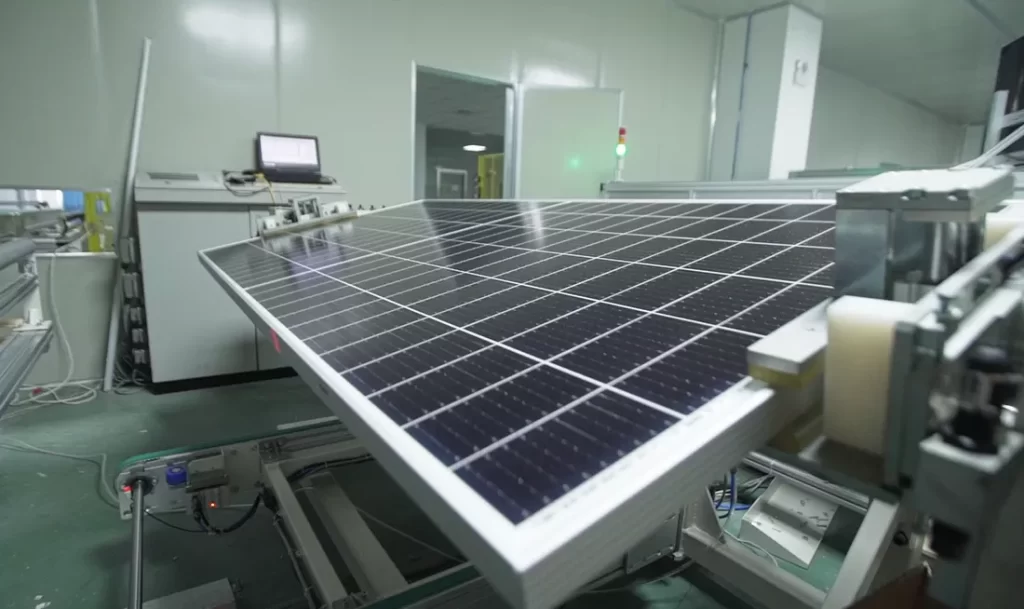Solar panels have become increasingly popular as a source of renewable energy, converting sunlight into electricity to power homes and businesses. As more people invest in solar technology, it’s crucial to understand how much power these systems can generate. This comprehensive guide explores various factors that affect solar power generation, including calculations, wattage, efficiency, energy storage, and maintenance.
How to calculate the output of solar panels?
Solar panels vary in output depending on their design and environmental conditions. To estimate how much energy a solar panel can generate, a solar panel output calculator can be invaluable.
Basic Calculation of Solar Panel Output
The basic formula to calculate the daily energy output of a solar panel is:
[\text{Daily Energy Output (kWh)} = \text{Panel Power Rating (kW)} \times \text{Sunlight Hours (h)} \times \text{System Efficiency}]
Key Variables
Panel Power Rating: The maximum output of the panel under ideal conditions, usually measured in kilowatts (kW).
Sunlight Hours: The average number of hours per day the panel receives direct sunlight, which varies by location and season.
System Efficiency: A percentage that accounts for energy losses in the system, including inverter losses, temperature effects, and shading.
Example Calculation
Let’s consider a practical example. Suppose you have a 300 W solar panel (0.3 kW) that receives an average of 5 sunlight hours per day, with a system efficiency of 80% (0.8):
[\text{Daily Energy Output} = 0.3 , \text{kW} \times 5 , \text{h} \times 0.8 = 1.2 , \text{kWh}]
Thus, this panel would generate approximately 1.2 kWh of electricity per day under these conditions.

How many watts of electricity can a solar panel generate?
Solar panels are available in different types, each with varying wattages and efficiencies:
Panel Types
Monocrystalline Panels:
Wattage: Typically range from 300 to 400 watts or more.
Efficiency: Higher efficiency, often above 20%, making them suitable for limited space.
Characteristics: Uniform dark color, long lifespan, and high performance in low-light conditions.
Polycrystalline Panels:
Wattage: Generally range from 250 to 350 watts.
Efficiency: Slightly lower efficiency, around 15-20%.
Characteristics: Bluish color, less expensive than monocrystalline, but slightly less efficient.
Thin-Film Panels:
Wattage: Usually lower, often between 100 and 200 watts.
Efficiency: Lower efficiency, generally around 10-15%.
Characteristics: Flexible and lightweight, can be integrated into building materials, but require more space for the same output.

How effective are solar panels?
The efficiency of a solar panel is crucial for determining how effectively it converts sunlight into electricity. Most panels have an efficiency rating between 15% and 22%.
High-Efficiency Solar Panels
Top-tier Options: Some manufacturers offer high-efficiency panels exceeding 22%, ideal for maximizing energy output in compact installations.
Temperature Effects: Efficiency can drop in high temperatures, so understanding local climate conditions is essential when selecting panels.
How much electricity does a 1 kW solar panel system produce?
A standard 1 kW solar panel system can produce about 4 to 5 kWh of electricity daily, depending on factors such as geographic location, time of year, and weather conditions.
Geographic Variability
Sunny Regions: Areas with more sunlight will generate higher outputs, making solar power more effective.
Seasonal Changes: During winter months, solar production can decrease due to shorter days and potentially cloudy weather.
How do I store the electricity generated by solar panels?
One of the significant advantages of solar power is the ability to store excess energy for later use. This is often done through battery storage systems, allowing users to tap into solar-generated electricity at night or during periods of low sunlight.
Types of Battery Storage
Lithium-Ion Batteries:
Advantages: High efficiency, long lifespan, and better depth of discharge.
Applications: Commonly used in residential solar systems due to their performance.
Lead-Acid Batteries:
Advantages: Generally cheaper upfront costs.
Disadvantages: Shorter lifespan and lower depth of discharge compared to lithium-ion.
Grid-Tied vs. Off-Grid Systems
Grid-Tied Systems: Allow for energy exchange with the utility grid. Users can draw from the grid when solar production is low and sell excess energy back.
Off-Grid Systems: Require sufficient storage to meet all energy needs, as they are not connected to the grid.

How to check if solar panels are working effectively?
Regular monitoring of solar panel performance is essential to ensure they operate efficiently.
Monitoring Methods
Inverter Displays: Many modern solar inverters provide real-time data on energy production.
Mobile Apps: Numerous apps enable users to track their solar energy generation remotely, providing insights into performance over time.
Maintenance Practices
Cleaning: Dust and debris can block sunlight, so periodic cleaning of panels is recommended.
Professional Inspections: Annual inspections by a qualified technician can help identify issues such as shading, wiring problems, or wear and tear on components.
Conclusion
Understanding how much power solar panels generate involves a detailed consideration of several factors, including calculations, panel types, efficiency, storage options, and maintenance practices. By leveraging tools like solar panel calculators and monitoring systems, homeowners and businesses can maximize their investment in solar energy. As technology continues to advance, solar power remains a vital component of a sustainable energy future, providing clean and renewable energy solutions for everyone.

